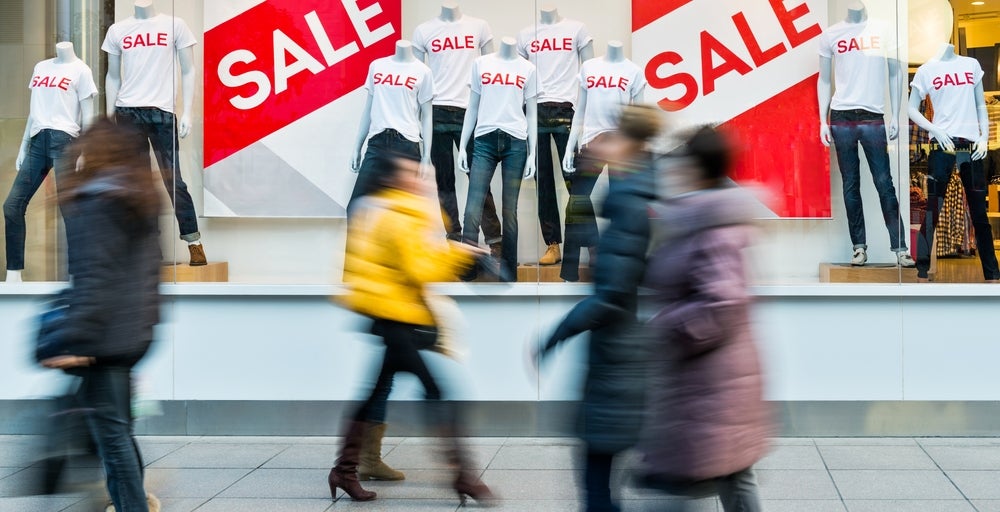Influencer marketing is gradually emerging as the “hidden gem” of marketing tactics, with brands now dedicating specific budgets for annual campaigns.
 While brands are undoubtedly creating greater awareness with their audiences through social media platforms, the trust and relatable nature that influencers have with their followers is what’s key to driving consumers from engagement to purchase. Influencer marketing is way more than “likes” and “favorites” —it’s time to start thinking about how that engagement can turn into purchases, immediately and long-term.
While brands are undoubtedly creating greater awareness with their audiences through social media platforms, the trust and relatable nature that influencers have with their followers is what’s key to driving consumers from engagement to purchase. Influencer marketing is way more than “likes” and “favorites” —it’s time to start thinking about how that engagement can turn into purchases, immediately and long-term.
For brands to obtain the best ROI from their influencer marketing efforts, a certain level of monitoring and tracking is needed for better targeting and campaign focus. Whether you’re activating hundreds of micro-influencers or a handful of celebrity-tier influencers, try these four musts to improve ROI with influencer marketing.
- Use Tracking Pixels To Accurately Follow the Customers Journey From Reading Sponsored Content To Purchase
Pixels and cookies give brands the opportunity to see where exactly traffic is coming from and insight into what the viewers’ interests are, providing a better understanding of the audience when engaging with bloggers. Knowing your audience is critical for retargeting. By using pixels and cookies, brands can collect information previously not leveraged in influencer marketing such as how many impressions the piece has, how many page views resulted in true readership, how the audience has engaged with the sponsored content versus non-sponsored content, location of the followers, and IP addresses of individuals that brands should focus on for retargeting efforts.
Additionally, pixels allow for brands to track the entire user experience, from initial touch point, to purchase—whether the purchase came from a direct click, through a retargeting ad served after the reader engaged with the sponsored content, or through an organic search after reading the sponsored content. This is achieved by placing a conversion pixel on the brands website, which shows how many organic searches were inspired by the initial touch point of the sponsored post.
- Use Direct Response Methods In Instagram Advertising
Social media impacts what we buy, and how we buy it. Piggybacking off of the natural engagement habits of consumers results in higher conversion rates. So how exactly does one mimic the organic experience that Instagram users have and convert that to sales?
Comment-to-Purchase is a tactic that has resulted in millions of dollars of trackable sales. An influencer or brand simply uses technology that emails a link to purchase a product when a comment is left with that person’s email address. Of course, for privacy, the emails are deleted after they are left.
This can all be done programmatically and is the best chance of capturing immediate interest for a product advertised on Instagram. Influencers simply say, “comment with your email address to be sent a link to purchase!” and a new customer is born.
- Track Online and Offline Sales By Texting and Emailing Coupons
We’ve seen it with the Pokémon Go craze that’s sweeping the nation—digital technology has a huge impact on our everyday lives. Brands need to take advantage of the direct line mobile and digital technology provides to consumers, giving them a channel to get their product in front of the eyes of best consumers. By marrying digital with reality, you can monitor and track the impact that digital campaigns have on daily purchasing decisions.
For example, when marketing with coupons through text or email, brands can then track how their online influencer marketing drives foot traffic into the store by analyzing the use of these coupons. SMS marketing performs better through Instagram, while email marketing outperforms on blogs.
Brands or influencers that want to integrate text message marketing into their influencer program are in luck—redemption rates have been recorded of up to 45% by texting influencers coupon codes to redeem a $1 Coca-Cola at their nearest AMC Theatre, further proving the power of thought-out influencer marketing plans.
- Work With Influencers on an Ongoing Basis for The Best Price and Most Sales
It seems simple enough but many brands do not look at influencer marketing as a tactic that should be ongoing, unlike their other advertising methods.
The most successful influencer campaigns that receive higher ROIs are strategically planned for extended periods of time, building brand exposure and reliability with influencer followers. One-off campaigns, while useful for a quick blast to consumers, prove to be less effective. To improve ROI with influencer marketing campaigns that have influencers posting on a regular basis, at pre-determined intervals, for a specific amount of time can do the trick.
Purchasing more posts also saves brands big on the upfront costs. Similar to buying an item at a wholesale store, brands get more bang for their buck when buying sponsored posts in bulk. When purchasing a larger package of posts it’s often more affordable, given that many influencers give brands discounted prices for multiple posts.
Brands have ample opportunities to identify the right audience, engage consumers and ultimately drive sales: it’s just about knowing what tools to use in order to secure those opportunities. Understanding the target consumer, knowing how to get in from of them and activating influencers that can produce the right kind of content content helps boost ROI and drive consumers to store shelves.
Sarah Ware is CEO of Markerly—@WareSarah
Related articles:



